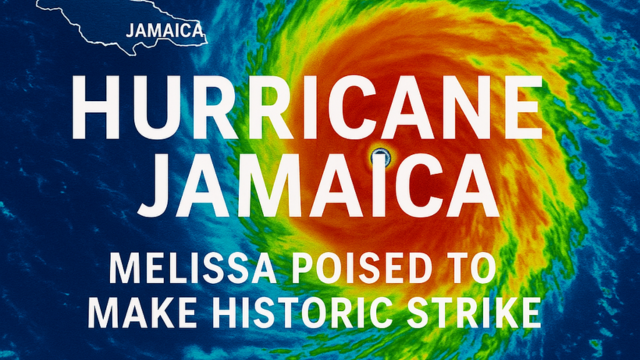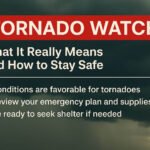As the sun sets over the Caribbean and eyes turn to the glowing satellite feeds, one word dominates headlines across the region: Melissa. The latest threat in a rapidly warming ocean, Hurricane Melissa has intensified into a Category 4 monster with Jamaica squarely in its sights. The phrase hurricane Jamaica has taken on new urgency as Melissa barrels slowly toward the island, carrying with it the terrifying promise of record-breaking winds, devastating floods, and coastal destruction.
This is not a drill. This is not a “maybe.” This is a real, dangerous situation that could make history for the wrong reasons.
Melissa’s trajectory and Jamaica’s growing concern
Over the last 24 hours, Hurricane Melissa has undergone rapid intensification fueled by steamy sea surface temperatures and minimal wind shear. These are the ideal ingredients for a hurricane to grow in size and strength quickly, and Melissa has not wasted any time doing just that. By Sunday, October 26, the storm reached Category 4 status with sustained winds of 140 mph and a slow crawl to the west, moving just 3 mph south of Kingston. That slow motion is one of the biggest red flags. It means Jamaica could be exposed to prolonged high winds, intense rainfall, and storm surge for hours rather than minutes.
If you’re anywhere on the island, it doesn’t matter if the eyewall hits directly or glances by the coast. The scale of this storm and its slow movement mean that hurricane Jamaica isn’t just about wind. It’s about rain, mudslides, collapsed hillsides, stranded villages, rivers that won’t stop rising, and roads that may vanish beneath walls of water.
The National Hurricane Center (NHC) has issued a Hurricane Warning for the entire island, not just for isolated zones. That means hurricane conditions are not only likely, they are expected. Jamaica’s emergency management officials have opened shelters across the island, suspended flights, and issued repeated calls for evacuation from flood-prone and landslide-prone areas.
What does this mean for everyday Jamaicans?
Imagine this. It’s late afternoon and the sky goes gray, not just cloudy, but the kind of steel that makes animals act strange and turns every breeze into a whisper of something worse. Then comes the first band. Wind slams branches against windows. Power flickers. Rain falls sideways. That’s just the beginning.
In Jamaica’s eastern parishes like Portland and St. Thomas, those bands have already begun to arrive. Flash flood alerts are active. Muddy hillsides are slick, unstable. Coastal roads are being battered by pre-landfall waves. Further west, places like Kingston, Spanish Town, and Clarendon are preparing for the worst, hoping the eye shifts just enough to spare them but knowing it might not. The hurricane Jamaica situation doesn’t care if you’re ready or not. It will come.
Forecast models show rainfall totals of up to 20 to 40 inches in some areas, an amount more than enough to wash out roads, destroy homes built on slopes, and overwhelm drainage systems from cities to sugarcane fields. The flooding alone could rival or exceed the disaster left by Hurricane Gilbert back in 1988. If the inner eyewall hits directly, winds could peel rooftops, uproot trees, snap power poles, and leave thousands without electricity for days or even weeks.
What makes Melissa particularly frightening is that it could be the strongest direct hurricane landfall on record for Jamaica. While other hurricanes have skirted the island or brushed its coasts, Melissa is different. If it continues on its projected path, this will not be a glancing blow. This will be a head-on hit.
What to do now, not tomorrow
Right now, it’s all about action. Don’t wait for the wind to pick up. Don’t wait for official confirmation that your street is underwater. If you live near a hillside, a river, or a coastline, move. Go inland. Go higher. Take what you can, but don’t delay. The government has opened hundreds of shelters. Many will be able to withstand what’s coming far better than older homes or informal settlements built on unstable terrain.
Charge your devices. Fill your water containers. Secure important documents in zip-seal bags. Keep flashlights close. If the lights go out, don’t panic. Stay away from windows. Turn your fridge to its coldest setting now. If your area floods easily, move valuables to higher shelves. Tie down anything that might fly away.
Once Melissa arrives in full, it will be too late for most changes. Roads will flood quickly. Trees will fall. Power may vanish without warning. The goal is not to be dramatic. The goal is to be honest. Hurricane Jamaica is not a phrase that will just disappear by morning. This storm is real, and it’s already begun writing its chapter in the island’s storm history.
Let’s not forget the psychological toll either. For many Jamaicans, especially in rural areas, the fear is not just about the wind but about being cut off. When bridges wash out, when phones go silent, when no one can reach you for days, the fear sets in deeper. The best way to manage that fear is to act now while you still have time and options.
What happens after the landfall?
The forecast path shows Melissa eventually curving toward southeastern Cuba and then heading toward the Bahamas. But that part of the track is not what matters right now. Jamaica is the story. Jamaica is the target. By the time the storm passes, the landscape could look very different. Rivers will have carved new paths. Trees will block major highways. Crops may be flattened. Entire coastlines could be reshaped by surge and waves.
Recovery won’t be fast. It never is after a hurricane of this size. But Jamaica has been through storms before. There is strength in its people, and there is wisdom passed down from generation to generation about how to prepare, how to survive, and how to rebuild.
But that only works if you make it through.
So today, whether you’re in Montego Bay or Mandeville, St. Thomas or St. Elizabeth, remember this: hurricane Jamaica is not just a forecast, it’s a lived experience that’s about to unfold. How you prepare now could make all the difference in what your tomorrow looks like.
Stay safe. Watch the updates. Trust your instincts. This is one of those storms that people will talk about for decades.


